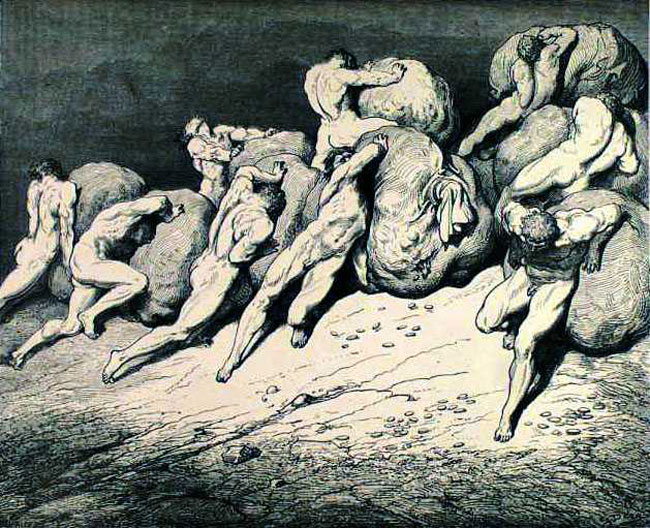Link: Doctor Who on Netflix, DVD, BBC. (For Netflix): It is under Season 2, "Satan's Pit"
For those who
love The Doctor (from Doctor Who),
the producer, Russell Davies, decided to incorporate Dante’s vision of Lucifer
inside the Doctor Who story line.
In the episode, “Satan’s Pit” from
Series nine (2006), The Doctor takes his TARDIS to a base (on top of a rocky
planet) that is floating towards a black hole. There are humans and their Oods (basically,
alien slaves) on this base and every hour they become closer to the black hole.
What is even more dangerous, there seems to be a Beast that is controlling some
members of the base, telepathically, and is making the members do evil acts
(mainly kill other not possessed members). As The Doctor gains more
information, he develops the plan to go deep underneath the planet where the
Beast lives.
We find out that the Beast is
actually the Devil or Lucifer trapped underneath the asteroid. There are
similarities between Lucifer in the Inferno
and in Doctor Who. One big similarity
is that both Lucifers are not privileged to have a voice. In the Inferno, Lucifer is deemed a speechless
creature who spends eternity eating three biggest betrayers of history (Judas,
Cassius, and Brutus) with half of his body suspended in ice, even though in Doctor Who, Lucifer is suspended in
fire. Both fire and ice suit Lucifer in which he is a fiery, violent creature
whose soul is cold and evil. The point of taking away Lucifer’s ability to
speak is a deliberate act of making him a powerless creature. Since it was his
pride (that he should be a more powerful deitiy than God) caused his downfall,
it seems only right for him to not any of the power he so desired.
Another similarity between the two Lucifers
is the structure in which they reside in. For instance, Lucifer in the Inferno lives in Hell, which is funnel-shaped
and leads down to the lowest level, Judecca. When The Doctor goes underneath
the planet, it is shaped as funnel that has a gravity field. Even though there
aren’t other levels of Hell in the funnel shaped gravity field, it still
remains a domain where Lucifer dominates and resides.
Although both Davies and Dante give
Lucifer no voice to speak, Davies has to stick to the Doctor Who plotline. The TARDIS is not only time machine (in
simplest terms), but also a language (alien, human, Siltheen, Daleks, etc.)
translator. Lucifer communicates to The Doctor through a series of grunts that
The Doctor is able to decipher into verbal words because of the TARDIS. Also,
Lucifer is also given a voice when uses the humans and Oods, telepathically, to
do his bidding and speak. One phrase that is repeated constantly by the
possessed is that, “only darkness remains.” Thus, giving Lucifer more power
than Dante has allocated in his Inferno.
When The Doctor is translating the grunts of Lucifer, Lucifer says that if even
he dies, the thought of him will always remain. The idea of Lucifer does not
only exist in Christianity, but in most religions and non-religions as well. This
is a very interesting concept because although Dante takes away Lucifer’s power
to speak, Lucifer still has power. He has power over people because the very
thought of him invokes fear and fear controls people. If fear didn’t control
people, then Hell wouldn’t be deemed as a bad place to go that everyone tries
to avoid. The whole construction of the Inferno
is to be warning to the Florentine people (and the Church) of what their evil
will lead them as well as a warning to Dante to not succumb to the temptation
his fellow Florentines did. Words do have power, but thoughts have even greater
power.


 The avarice and Prodigal as interpreted by Dali.
The avarice and Prodigal as interpreted by Dali.